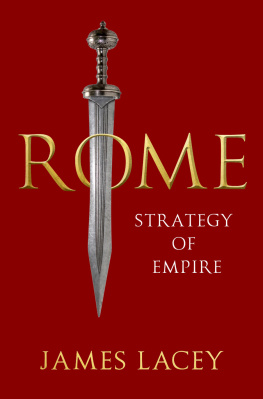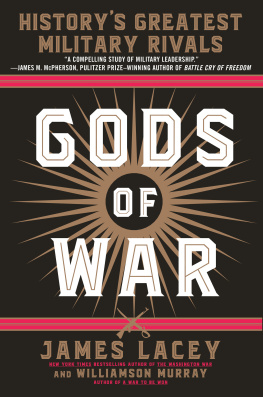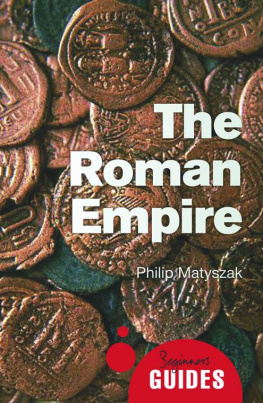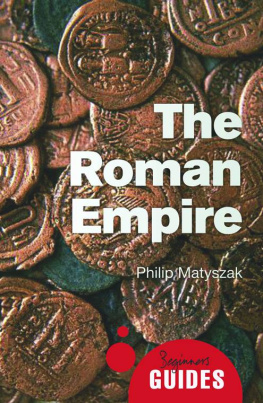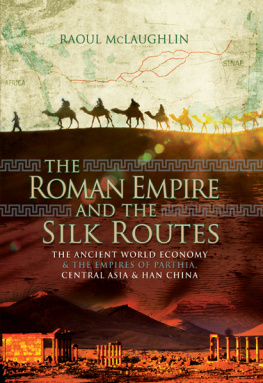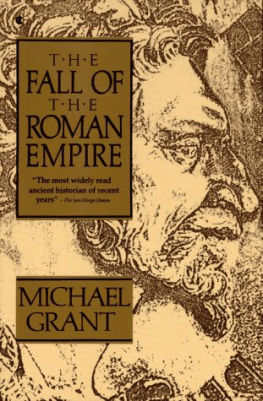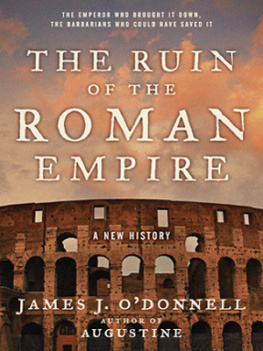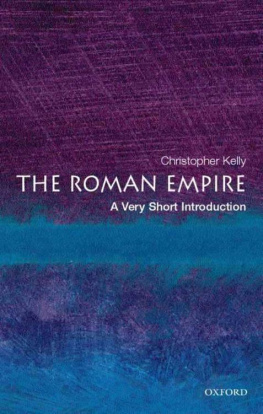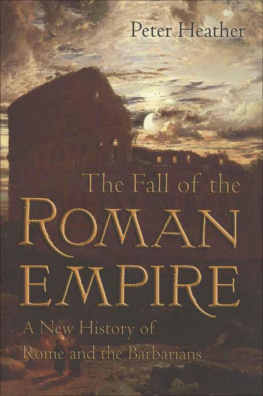Rome

Oxford University Press is a department of the University of Oxford. It furthers the Universitys objective of excellence in research, scholarship, and education by publishing worldwide. Oxford is a registered trade mark of Oxford University Press in the UK and certain other countries.
Published in the United States of America by Oxford University Press
198 Madison Avenue, New York, NY 10016, United States of America.
Oxford University Press 2022
All rights reserved. No part of this publication may be reproduced, stored in a retrieval system, or transmitted, in any form or by any means, without the prior permission in writing of Oxford University Press, or as expressly permitted by law, by license, or under terms agreed with the appropriate reproduction rights organization. Inquiries concerning reproduction outside the scope of the above should be sent to the Rights Department, Oxford University Press, at the address above.
You must not circulate this work in any other form and you must impose this same condition on any acquirer.
Library of Congress Cataloging-in-Publication Data
Names: Lacey, James, 1958- author.
Title: Rome : strategy of empire / James Lacey.
Description: New York, NY : Oxford University Press, [2022] |
Includes bibliographical references and index.
Identifiers: LCCN 2022003249 (print) | LCCN 2022003250 (ebook) |
ISBN 9780190937706 (hardback) | ISBN 9780190937720 (epub)
Subjects: LCSH: Strategy. | RomeMilitary policy. | RomeArmy. |
RomeHistory, Military.
Classification: LCC U35 .L33 2022 (print) | LCC U35 (ebook) |
DDC 355.009456/32dc23/eng/20220223
LC record available at https://lccn.loc.gov/2022003249
LC ebook record available at https://lccn.loc.gov/2022003250
DOI: 10.1093/oso/9780190937706.001.0001
Dedicated to Thomas and Jordan Saunders for their support of learning and their love of country
Contents
27 BCE The Senate confers on Octavian the title of Augustus
23 BCE The Senate grants Augustus the powers of imperium proconsulare maius and tribunicia potestas for life, thereby ending the Roman Republic
9 CE Tiberius ends the Pannonian Revolt
9 CE Roman army under Varus annihilated in the Teutoburg Wald
1437 CE Tiberius becomes emperor
1416 CE Germanicus campaigns in Germany
3741 CE Caligula becomes emperor
3940 CE Caligula launches an abortive campaign against Germania and Britain
4154 CE Claudius becomes emperor
4344 CE Britain brought under Roman rule
5468 CE Nero becomes emperor
6869 CE Year of the Four Emperors
6979 CE Vespasian becomes emperor; start of the Flavian dynasty
7981 CE Titus becomes emperor
8196 CE Domitian becomes emperor
96 CE Domitian murdered; Nerva becomes emperor
98 CE Trajan becomes emperor
101 CE Trajan campaigns on the Danube
104 CE Trajan conquers Dacia
114117 CE War with Parthia adds Armenia, Mesopotamia, and Assyria as new provinces
117 CE Hadrian becomes emperor and makes peace with Parthia
138161 CE Antoninus Pius becomes emperor
161 CE Death of Antoninus; Marcus Aurelius becomes emperor with Verus as co-emperor
162166 CE Parthian War
166 CE Start of the Antonine Plague
167175 CE First Marcomannic War on the Danube
167 CE Marcus Aurelius attacks the Quadi
168 CE Marcus Aurelius becomes sole emperor
169179 CE Marcus Aurelius campaigns in Pannonia
175 CE Avidius Cassius revolts
175180 CE Second war on the tribes along the Danube
180 CE Commodus becomes emperor and makes peace with the Danubian tribes
192 CE Death of Commodus
193194 CE A second Year of Four Emperors
193211 CE Septimius Severus becomes emperor, starting the Severan dynasty
195196 CE Parthian campaign
208211 CE Septimius Severus heads the campaign in Britain and dies there
211217 CE Caracalla becomes emperor
212 CE Caracalla confers citizenship on all free men in the Empire
216 CE War breaks out again in Parthia
218222 CE Elagabalus becomes emperor
222235 CE Alexander Severus becomes emperor
224241 CE Artaxerxes I reigns over a new Persian dynasty, the Sassanids
235238 CE Gordianus I and II become co-emperors
238244 CE Gordianus III becomes emperor
241271 CE Sapor I becomes ruler of Persia
242243 CE Victorious Roman campaigns against the Persians
244249 CE Philip the Arab becomes emperor
248 CE Rome celebrates its millennium
248251 CE Decius becomes emperor
251 CE Decius killed in battle by Goths
251253 CE Trebonianus Gallus becomes emperor
253260 CE Valerian and his son Gallienus become co-emperors
253 CE Persians invade and take Antioch
260 CE Valerian captured by Persians
260268 CE Gallienus becomes sole emperor
260272 CE Zenobia seizes most of the Eastern Empire and Egypt but is defeated by Aurelian
274 CE Postumus establishes a new empire in Gaul (261268), ruled by Tetricus (270274)
268270 CE Claudius II (Gothicus) becomes emperor
270275 CE Aurelian becomes emperor
276282 CE Probus becomes emperor
282283 CE Carus becomes emperor
283285 CE Carinus becomes emperor
283 CE Carus campaigns in Persia
284305 CE Diocletian and Maximian become co-emperors
293 CE Diocletian creates the tetrarchy with himself and Maximian as co-Augusti and Galerius and Constantius as co-Caesars
297 CE The Empire is divided administratively into twelve dioceses
301 CE The Edict of Maximum Prices is published
305 CE Diocletian and Maximian abdicate; Galerius and Constantius become co-Augusti
306 CE Constantine is declared co-Augustus after death of his father, Constantius
306 CE Maxentius, son of Maximian, revolts against Constantine
308 CE An imperial conference, held by Diocletian, starts a new round of civil wars
312 CE Constantines victory at Milvian Bridge give him control of Rome
313 CE Constantine and his eastern rival, Licinius, reconcile and become co-emperors
313 CE The co-emperors issue the Edict of Milan, ending the persecution of Christians
314 CE A ten-year series of civil wars erupts
324 CE Constantine becomes sole emperor
325 CE The Council of Nicaea makes Christianity the official religion of the Empire
326 CE Constantine makes Byzantium the Empires new capital and renames it Constantinople
337 CE Constantine dies
337 CE The Empire is divided among Constantines three sons, Constantine II (Western), Constans (Middle), and Constantius (Eastern)
338 CE Constantius fights war against Persias Sapor II; first siege of Nisibis
340 CE Constans and Constantine II fight; Constantine II is killed at the Battle of Aquileia
344 CE Persian victory at Singara
346 CE Second unsuccessful siege of Nisibis by Sapor II
350 CE Third siege of Nisibis. Because of trouble on his other frontiers, Sapor II makes a truce with Constantius. A usurper, Magnentius, murders Constans and becomes emperor in the west
351 CE Magnentius defeated by Constantius II at the Battle of Mursa
352 CE Italy recovered; Magnentius in Gaul
353 CE Final defeat and death of Magnentius; Constantius becomes the Empires sole ruler
356 CE Julian dispatched as Caesar to Gaul, where he successfully fights the Alemanni, Quadi, and Sarmatians
357 CE Challenge by Sapor II
359 CE Sapor II invades Mesopotamia; Constantius goes to the east

